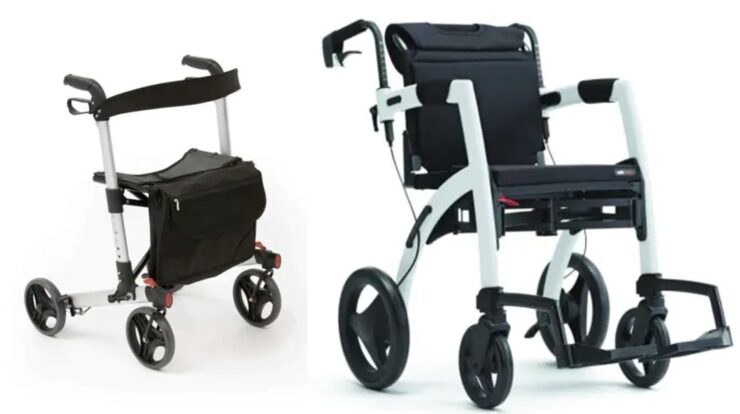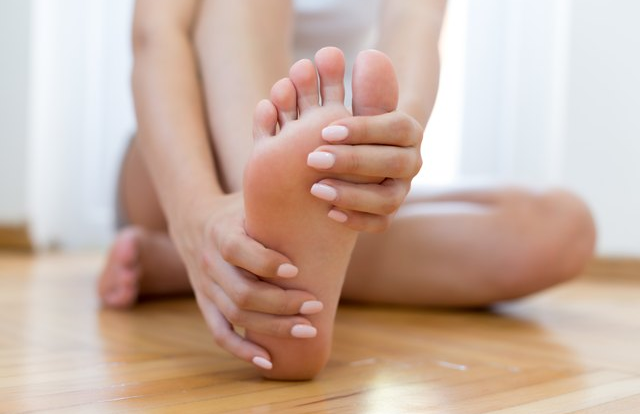
Walking with crutches in a weight-bearing manner can help you regain mobility and strength while ensuring stability during recovery. This guide provides clear instructions on using crutches safely when bearing weight on your injured or recovering leg, so you can move with confidence and reduce the risk of re-injury.
1. Know Your Weight-Bearing Status
Before you begin, it’s essential to understand your weight-bearing restrictions, which your healthcare provider will set. The most common types are:
- Partial Weight Bearing (PWB): You can place a limited amount of weight on the injured leg.
- Weight Bearing as Tolerated (WBAT): You can bear as much weight as you feel comfortable, within pain limits.
- Full Weight Bearing (FWB): You can place full weight on the injured leg, typically with crutches for support and stability.
2. Adjust Your Crutches
Properly adjusted crutches are key to a safe, comfortable experience:
- Height: Adjust the crutches so that the top rests about 1-2 inches (two finger-widths) below your armpits when you’re standing upright.
- Handgrips: With arms relaxed, position the handgrips so your elbows are slightly bent (around 20-30 degrees) when holding them.
- Check Tips: Ensure rubber tips are on each crutch base to prevent slipping.
3. Standing with Crutches
To start, learn to stand up and position yourself comfortably with the crutches. Here’s how:
- Place both crutches under your arms.
- Lean on the handgrips (not under your armpits) to avoid arm strain.
- Keep the crutches about shoulder-width apart for balance and support.
4. Walking with Crutches for Different Weight-Bearing Levels
Partial Weight Bearing (PWB)
- Move both crutches forward about 6-12 inches, placing them firmly on the ground.
- Step forward with the injured leg, lightly bearing only as much weight as advised.
- Step with the uninjured leg so it lands on the same level as your injured leg and crutches.
- Repeat, making sure the crutches remain stable with each step.
Weight Bearing as Tolerated (WBAT)
- Move the crutches forward slightly, about 6 inches ahead of you.
- Step forward with your injured leg, applying as much weight as feels comfortable.
- Follow with your stronger leg, bringing it up to match the crutches and injured leg.
- Continue this sequence, gradually applying more weight on the injured leg as you feel stable.
Full Weight Bearing (FWB)
- Hold your crutches slightly ahead of you, keeping them stable and evenly spaced.
- Step forward with your injured leg, placing full weight on it while using the crutches for added stability.
- Follow with your uninjured leg, stepping it forward and bringing the crutches up in sync.
- Continue, allowing the crutches to offer balance without fully supporting your weight.
5. Turning and Pivoting with Crutches
When turning:
- Place the crutches in the direction you want to go.
- Use small steps to turn your body slowly, keeping the crutches stable on the ground.
- Avoid sharp turns or twisting suddenly, as this can strain your injured leg.
6. Sitting and Standing with Crutches
Getting in and out of a chair can be tricky, but the following tips make it manageable:
Sitting Down
- Back up to the chair until you feel it against your legs.
- Move both crutches to one hand, using the other hand to reach back for the chair.
- Slowly lower yourself onto the chair, keeping your injured leg slightly extended.
Standing Up
- Place both crutches in one hand and use the other hand to push up from the chair.
- Stand and transfer a crutch to each hand for stability.
- Position the crutches as you begin to walk.
7. Tips for Safe Crutch Use
To stay safe and effective with weight-bearing crutch walking, keep these tips in mind:
- Take it slow – Moving too quickly can compromise balance and cause falls.
- Keep the crutch tips dry and clean – Dust or wetness on crutch tips can lead to slipping.
- Avoid leaning on crutches under the armpits – Instead, use the handgrips to bear weight.
- Rest when needed – Walking with crutches takes energy, so take breaks if you’re feeling tired.
Troubleshooting Common Challenges
Pain or Discomfort
If you experience pain in your wrists or shoulders, make sure you’re placing weight on the handgrips instead of leaning on your armpits, and double-check that the crutches are at the correct height.
Balance Issues
If balance is an issue, practice walking on flat surfaces and gradually increase your weight-bearing tolerance. A physical therapist can guide you in strengthening exercises to improve stability.
Stairs
If you need to use stairs, follow a specific technique to maintain safety: lead with the uninjured leg when going up and with crutches when going down.
Conclusion
Walking with crutches while bearing weight on an injured leg is a skill that requires practice and patience. By adjusting the crutches properly, moving with stability, and using weight-bearing techniques that suit your level of recovery, you’ll improve mobility while keeping safety first. Remember to listen to your body, use crutches correctly, and seek guidance from healthcare providers when needed to make your journey toward recovery as smooth and effective as possible.






